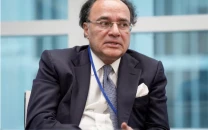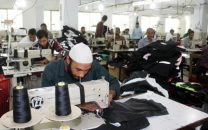Becoming a part of the solution: How to sell our country
Pakistan needs to hire a PR firm and give it the right ammo to change perceptions.

On my recent visit to California, I was asked what in my opinion was the biggest problem facing Pakistan these days?”
“There isn’t just one” I replied. “Already under a lot of stress due to deficits, our country is facing compounded problems because of the recent floods; terrorism is another one and, of course ,inflation ... and oh, don’t forget the uncertainty all the time.”
“You people don’t realise that it’s the image Pakistan has which is one of your biggest problems!” I was told by my host. Hence in our discussion that evening, we moved from one topic to another, but this statement caused us to return to this same topic many times over. It is a known fact that when Pakistani officials sit down at the negotiating table with the world, the only commodity they offer to sell is security. The way things have been moving in the recent few years, Pakistan is assumed to be the “problem” by the world and not a “part of the solution”. It is a known fact which has also been partly documented that Pakistan has paid a heavy price in the war on terror. The IMF acknowledges in its Poverty Reduction Strategy Paper issued in June last year that Pakistan’s economy has suffered a loss of more than $30 billion since the war on terror started. The IMF highlighted the economic cost of the war by looking at the direct cost of resource movement and indirect cost of loss of exports, foreign investment, privatisation, industrial output, and tax collection.
Pakistan has not been able to sell itself properly to the world. Since the US got involved in Afghanistan in 2001, its army has suffered nearly 1,371 casualties in hostile action whereas the total figure for Isaf forces has been 2,208. On the other hand, since 2003 Pakistan has lost as many as 19,742 people to terrorism with casualties peaking in 2009 when we lost as many as 8,389 people. There have been suicide bombings on mosques, army cantonments, foreign sportsmen, hotels, shopping centres, universities, colleges, businesses, government offices and many other places. But despite all this, the world points fingers at Pakistan rather than showing empathy.
I agree that Pakistan needs an image makeover and that too on surgical footings. The problem however is that no matter how much we write on what Pakistan needs, it’s the western world that needs to be informed in an effective manner. We have to reach out to the public in US and Europe. Pakistan needs to hire a PR agency that does effective marketing for the country. This basically means our message has to reach across to the world that Pakistan “has suffered a lot, you need to do your part now”.
But the question remains; how do we do that? We may consider having our billboards in key locations in Washington DC, New York, Los Angeles, San Francisco, London, Paris, Berlin, Geneva etc to tell them that when the Isaf loses one solider, the people of Pakistan lose as many as 10 people! We should reach out to the TV networks by advertising facts. We should also meet up with universities and various think tanks in US and other countries to show that all is not so bad in Pakistan. The West’s lack of interest to facilitate Pakistan in easing out our difficulties is more to do with our inability to present the opportunities offered by the country in an effective manner.
Pakistan presents numerous opportunities to the world. We need to upgrade and build our infrastructure; any improvement in the infrastructure will only have a multiplier effect on our economy. Our housing sector needs urgent investment as there is a great need to bridge the demand-supply gap. The power sector needs investment that is well documented and debated. We have a growing population with a significant part of our people still under the age of 20. Our industries are operating at near capacity, or in some cases shut down because of power shortages, forcing us to import to satisfy consumer demand. Education, health, logistics, transportation – name anything and you will need investment to galvanise it. And when you invest, you don’t do it for charity, it has a business angle behind it.
There has been silver lining in Pakistan as well where our capital markets have outshone many markets of the world. The KSE-100 has grown by 27% during 2010. Just to show you how much instability and media hype effects markets can be seen from the fact that during the last four months, September to December, the market grew by 25.8%! Imagine, had we not had all those storms in teacups related to the judiciary and speculation that the government is toppling, the markets could have risen even further! The sophisticated investors of the capital markets of the world know the opportunities Pakistan offers. This can be backed by numbers as well: more than $500 million flowed into our stock exchanges. It makes one wonder, don’t the foreigners read our local news and watch the analysis of doom on our TV channels?
We have to focus our energies in showing a united and positive image of Pakistan to the world. Once the right image is on display, money will flow in and our debts will be written off. All it requires is patience and effective campaigning.
The writer is an investment banker based in Sharjah
Published in The Express Tribune, March 14th, 2011.



















COMMENTS
Comments are moderated and generally will be posted if they are on-topic and not abusive.
For more information, please see our Comments FAQ